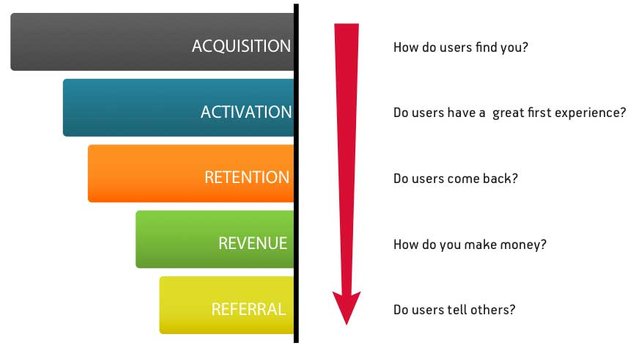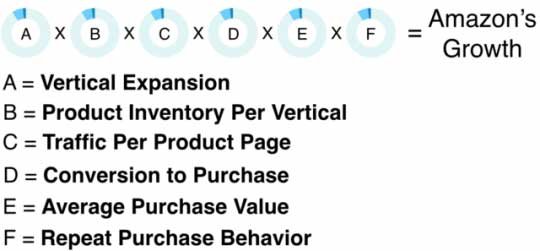Basics of Growth Hacking for Business Success
The most talkative word in the IT industry centering around US startups in Silicon Valley is “Growth Hacking”. This is because companies that started with startups such as Facebook, Airbnb, and Twitter all showed remarkable growth based on Growth hacking.
By the way, We’ve heard a lot of words called growth hacking, but we don’t know much about it. So we have summarized the concept of Growth Hacking and related frameworks.
Growth Hacking?
Growth Hacking is a well known word for marketer Sean Ellis who first mentioned his blog in 2010.
Growth hacking is a processive concept that applies the structure to grow a company to services and products. In other words, by analyzing the data of the users who use the service, we can continue to grow the service by eliminating the obstacles that impede growth and by continuing to make improvements.
Growth hacking can be roughly classified into two types.
- Improving the products and services that are the business itself
- Improvements to non-business elements
Why Growth Hacking is Needed?
Start-up brings new products based on ideas, but creating new loyal customers is very difficult because competitors are responding quickly. In order to adapt quickly to such a market environment, the service cycle is also very short as the service is reorganized.
In this process, the market environment began to change more and more quickly, and startups began to pay attention to the concept of growth hacking for faster success than others.
However, PMF (Product Market Fit) is very important for growth hacking. This Product Market Fit (PMF) is a concept presented by Mark Andrisen, founder of Netscape and an influential VC in Silicon Valley.
“Product/market fit means being in a good market with a product that can satisfy that market.”
– Mark Andrisen
In other words, it is important to launch a product that meets the needs of the market. The way to verify that our products are suitable for PMF is to measure whether more than 40% of the respondents said that it would be difficult if the product disappeared from the market.
If 4 out of 10 persons respond positively to the product, it means that the product is competitive.
Framework for growth hacking
There are three very popular ways to implement growth hacking.
1. David McClure’s AARRR
AARRR is a method devised by Dave McClure, who heads up 500 Startups, a startup accelerator. AARRR is a five-step user action that is represented in a funnel-shaped infographic.

- Acquisition: DAU, MAU, new user, etc.
- Activation: Bounce rate, average PV, average residence time, etc.
- Retention: rate of return, etc.
- Referral: the number of shares, the number of shares you clicked on, etc.
- Revenue: Conversion rate for each site
2. AIDA
The AIDA model is one of the best known frameworks. The AIDA model represents the process through which a customer purchases a product or service and should be able to answer the following questions step by step.

The AIDA Model
Awarness: Build brand awareness or partnership with your product or service. Messages can be delivered via articles, ads, podcasts, landing pages, and more. Relevant metrics that need to be analyzed are share counts, pageviews, and more.
- How do customers recognize products and services?
- What are our promotional strategies and what do you do to increase brand awareness?
- On what platform do you deliver what design and message?
Interest: You can deliver messages to web content, newsletters, social blogs, emails, and more. Relevant metrics that need to be analyzed are content clicks, number of shares, and so on.
- How can we get the customer’s attention?
- What is our biggest content strategy and is there any social evidence to support our reputation?
- How can I make the information available?
Desire: You can deliver messages to brochures, microsites, e-books, and more. Relevant metrics that need to be analyzed include related number of content downloads, pageviews, and click counts.
Action: Constantly testing and optimizing UI / UX. Also, record relevant data and look for improvements.
- Where should the customer place the elements for action?
- Where should customers find it most easily?
- On what platforms and how do you design?
3. ABCDEF
ABCDEF is a framework designed for Amazon. Because it is a framework for Amazon, it would be effective if applied to commerce-based companies.

Indispensable Growth Frameworks from My Years at Facebook, Twitter and Wealthfront
A (Vertical Expansion)
When Amazon launched, the product for growth was a book. Since then, they have continued to expand their music-related products and jewelry to expand their potential growth.
B(Product Inventory Per Vertical)
How did Amazon start with 10 books, expanded into all the books on the world, and sold 10 million books? Amazon’s growth was proportional to the depth of product-specific inventories. In the end, it is important to secure inventory and that this inventory should be a measure of growth.
C(Traffic Per Product Page)
In Amazon, the stock of goods is directly linked to the page of products that can cause additional traffic on the web.
D&E(Conversion to Purchase and Average Purchase Value)
The number and amount of each transaction purchased by the customer are closely related. Amazon continues to optimize these variables to propose yet another product and to help you generate additional revenue.
F(Repeat Purchase Behavior)
Through the steps from A to E above, Amazon introduces the product and builds a mechanism to continually promote repurchase behavior.